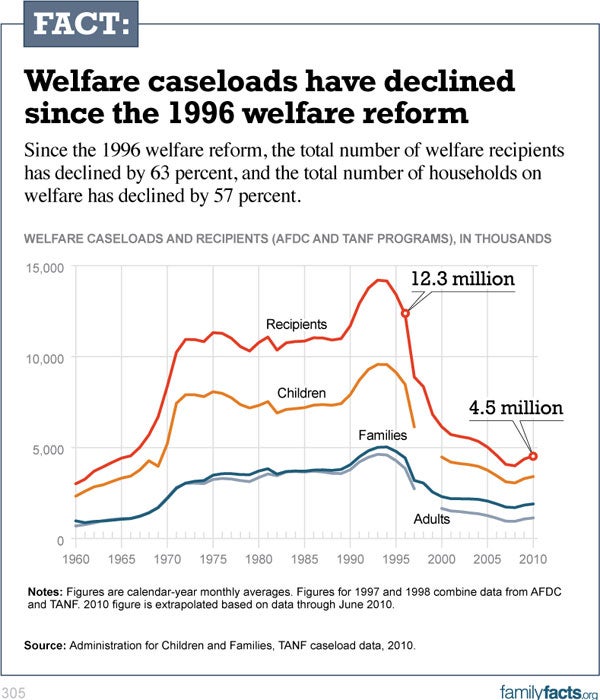Among the most valuable outcomes of the ongoing debate regarding the debt ceiling crisis and the critical need to rein in government spending has been a sharper focus on priorities in determining prospective cuts in government spending.
A coalition of faith leaders from a broad spectrum of denominations has declared that their clear priority is our nation’s bevy of poverty programs. They have petitioned policymakers to establish a “circle of protection” around programs for the poor, which would make them off-limits for budget cuts.
Yet protecting the status quo and propping up programs that have failed to reduce poverty should not be equated with helping the poor. A true measure of our nation’s compassion is not the number of people who are sustained in a state of dependency but the number who are empowered to achieve self-sufficiency.
In fact, our nation’s most ineradicable cases of poverty have roots that are much deeper than material circumstances. Poverty that is the result of relational and moral brokenness must be addressed on that level.
When considered in terms of outcome and effectiveness, the more than 70 programs in our nation’s massive and steadily growing welfare system have been far from successful. This is evident in the fact that, in spite of more than $16 trillion in expenditures, the ranks of those who are dependent on government support have continued to multiply.
The problem is that the approach to poverty that has dominated the last 50 years could itself be represented as a circle: a steadily widening circle that has defined a population of dependents, few of whom have been able to penetrate its circumference and enter the realm of self-sufficiency.
Though not by intention, the programs of the welfare system have set up road blocks to the two main avenues to upward mobility: marriage and work. Fifteen years ago, when reforms in just one welfare program addressed these flaws, nearly 3 million families were empowered to leave the welfare rolls.
A more effective approach to poverty could be represented not by a circle but by a triangle of uplift. In this triangle, the anchor angles would be reciprocity/personal responsibility and opportunity. Its apex would be self-sufficiency.
Impassioned and committed leaders in the policy arena seized this vision long ago. Among them was Jack Kemp, who, 15 years ago, urged policymakers to jettison a failed poverty agenda and “roll back its boundaries everywhere in our lives and expand the frontiers of freedom and opportunity for all.” He declared:
We need an anti-poverty agenda based on democratic capitalism, not socialism and on private ownership, not government control. Our definition of compassion is not how many people live on the government welfare plantation, but how many of our people are liberated from government dependence.
Kemp pursued his vision with real-world implementation. As HUD Secretary, he promoted the efforts of community leaders in public housing developments throughout the country who were striving to revitalize their neighborhoods. When he empowered resident groups to take on management responsibilities for public housing, literal transformations took place in their communities. Crime and drug trafficking plummeted, rental payment improved, and problems with plumbing, heating, and trash removal were addressed.
In addition, in many neighborhoods small enterprises emerged to meet the needs of the residents, including food co-ops, beauty and barber shops, and transportation services that provided access to jobs in the suburbs. College preparation programs were launched to expand the prospects of the next generation.
Complementing such action at the “opportunity” angle of the triangle of uplift are the efforts of thousands of grassroots leaders throughout the nation whose approach to poverty focuses on reciprocity and personal responsibility. Hundreds of these community leaders are part of a network of support established through Bob Woodson’s Center for Neighborhood Enterprise. Their commitment (often lifelong and 24/7) to help others rise to self-sufficiency focuses on the root causes of the poverty in their neighborhoods and often deals with behavior, life choices, and relationships. As Woodson has documented, their efforts have engendered awe-inspiring transformations: former gang members have become peer mentors while homeless addicts have emerged as productive employees, business owners, and responsible spouses and parents.
At this time of critical economic concerns, it should be kept in mind that the word crisis is rooted in the Greek word krises, or decision. The decisions made today can be a threshold to opportunity—not only for the economic stability of our nation but also for the rise of many to the apex of the “triangle of uplift,” as our nation adopts a new, effective paradigm to address poverty.
